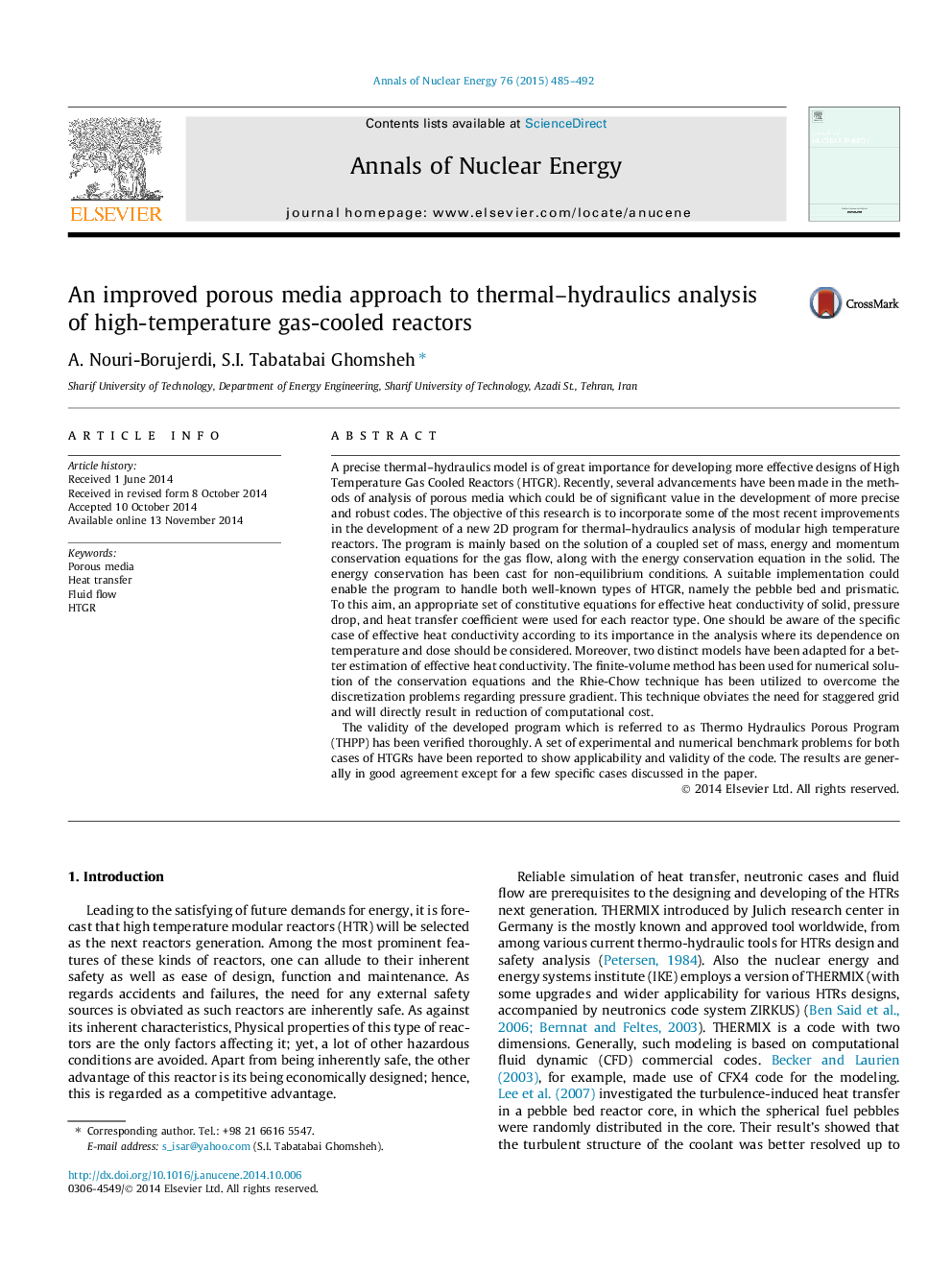| کد مقاله | کد نشریه | سال انتشار | مقاله انگلیسی | نسخه تمام متن |
|---|---|---|---|---|
| 1728216 | 1521122 | 2015 | 8 صفحه PDF | دانلود رایگان |
• The capabilities of Thermo Hydraulic Porous Program (THPP) for simulating pebble bed and block fuel elements are demonstrated.
• Outputs of the comparisons between THPP and the well-established codes demonstrates good agreement concerning steady state operation conditions.
• Comparisons of results between THPP and the thermal-hydraulics codes have shown good agreement for simulating pebble type fuel reactors.
• Results obtained from THPP show good agreement to simulate the block type of reactor.
A precise thermal–hydraulics model is of great importance for developing more effective designs of High Temperature Gas Cooled Reactors (HTGR). Recently, several advancements have been made in the methods of analysis of porous media which could be of significant value in the development of more precise and robust codes. The objective of this research is to incorporate some of the most recent improvements in the development of a new 2D program for thermal–hydraulics analysis of modular high temperature reactors. The program is mainly based on the solution of a coupled set of mass, energy and momentum conservation equations for the gas flow, along with the energy conservation equation in the solid. The energy conservation has been cast for non-equilibrium conditions. A suitable implementation could enable the program to handle both well-known types of HTGR, namely the pebble bed and prismatic. To this aim, an appropriate set of constitutive equations for effective heat conductivity of solid, pressure drop, and heat transfer coefficient were used for each reactor type. One should be aware of the specific case of effective heat conductivity according to its importance in the analysis where its dependence on temperature and dose should be considered. Moreover, two distinct models have been adapted for a better estimation of effective heat conductivity. The finite-volume method has been used for numerical solution of the conservation equations and the Rhie-Chow technique has been utilized to overcome the discretization problems regarding pressure gradient. This technique obviates the need for staggered grid and will directly result in reduction of computational cost.The validity of the developed program which is referred to as Thermo Hydraulics Porous Program (THPP) has been verified thoroughly. A set of experimental and numerical benchmark problems for both cases of HTGRs have been reported to show applicability and validity of the code. The results are generally in good agreement except for a few specific cases discussed in the paper.
Journal: Annals of Nuclear Energy - Volume 76, February 2015, Pages 485–492
